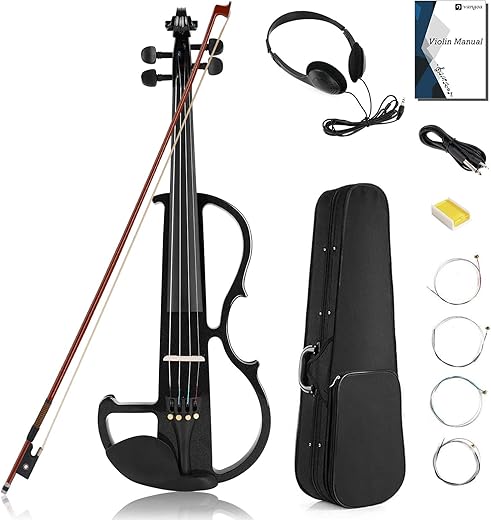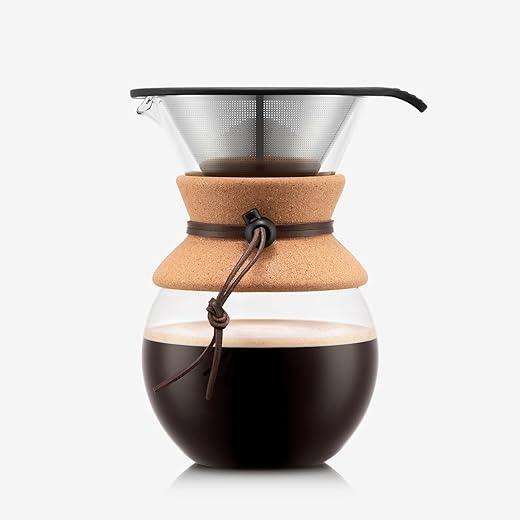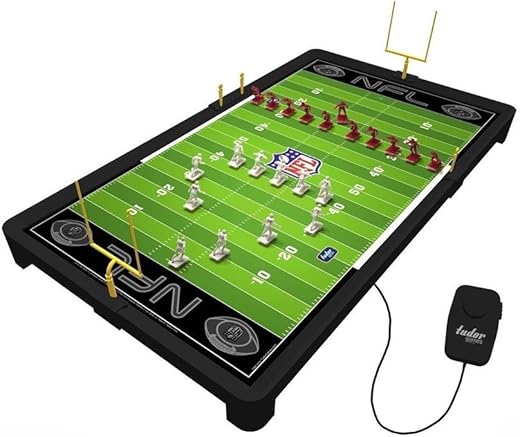The Electric Violin: My Journey Into the Future of Strings

Introducing the Future of Strings
As a passionate musician, my journey with the electric violin has opened up an incredible world of sound and creativity. This fascinating instrument represents a transformative shift in the realm of music, merging traditional craftsmanship with cutting-edge technology.
In this article, I will take you through the evolution of the electric violin, revealing how it has developed over the years into a modern staple for musicians across genres. We’ll also discuss tips for choosing the right electric violin to suit your personal style, as well as explore the unique playing techniques that make this instrument shine.
Further, I will delve into the role of technology in enhancing performances and how it shapes the future of music. Join me as we embark on this exciting journey into the future of strings and uncover the endless possibilities that await!




The Evolution of the Electric Violin
The story of the electric violin is a fascinating tapestry woven through history, innovation, and creativity. My journey with this instrument has been as much about exploration as it has been about music. Let’s take a closer look at how the electric violin has evolved and transformed over the decades.
A Humble Beginning
The electric violin’s journey can be traced back to the early 20th century. It began as an experiment, with inventors aiming to amplify the violin’s sound. The first notable models appeared in the 1920s, primarily used in jazz bands. Musicians like Joe Venuti embraced the electric violin, proving that it could hold its own in the limelight.
Innovations and Popularity
By the mid-20th century, the electric violin began to gain traction beyond jazz. The 1950s and 60s saw significant technological advancements. Solid-body designs by manufacturers like Fender and Gibson emerged, allowing for greater durability and volume. These innovations not only improved sound quality but also made the instrument more accessible to a variety of genres, including rock, pop, and experimental music. A perfect example of this versatility is Jerry Goodman, whose electrified performances with the Mahavishnu Orchestra were breath-taking and influential.
Diversification of Styles
As time marched on, the electric violin has come to be associated with diverse musical genres. Today, you can find it not only in rock and pop but also in classical crossover, contemporary folk, and even electronic dance music. Artists like Lindsey Stirling have spectacularly fused classical training with modern beats, showcasing the electric violin’s versatility like never before.
Key Technological Developments
Modern electric violins boast incredible technology, including:
Learnings from countless experiments and performances have sculpted the electric violin into a powerful, adaptable instrument, ready to suit the artistic needs of any musician.
As the electric violin continues to evolve, I find myself excited about the possibilities that lie ahead. In the next section, we’ll explore what factors to consider when choosing the right electric violin for your own musical journey, ensuring you’re well-equipped for your individual style.
Choosing the Right Electric Violin for You
Selecting the right electric violin can feel overwhelming, especially with the myriad of options available on the market today. In my experience, taking the time to consider various factors can help clarify which model will best suit you.
Sound Quality Matters
First and foremost, sound quality should be at the top of your list. Unlike traditional violins, electric violins rely on electronics to produce sound, so it’s essential to choose a model that excels in this area. I remember trying out several instruments and being surprised by how greatly the sound varied. Listen for clarity, warmth, and richness while keeping an ear out for any unwanted noise or buzzing. Before making a purchase, I suggest testing a few models side by side—this was one of the most illuminating parts of my journey.
Build Quality and Comfort
Next, consider the build quality and comfort. An electric violin should not only sound amazing but also feel good to play. Look for lightweight materials that still provide durability; many models today incorporate carbon fiber or solid woods. When I first picked up my electric violin, I made sure it felt comfortable against my shoulder, and that the fingerboard was easy to navigate. Don’t hesitate to try different body shapes—some are more ergonomic than others and can make a big difference during extended practice sessions.
Features that Enhance Your Playing
Electric violins come with a range of features that can enhance your playing experience. Some have built-in tuners, while others might include effects processors or Bluetooth capabilities. When I was in the market, I was drawn to models with varied tonal controls, allowing me to adapt my sound effortlessly. A standalone option I recommend is the Pyle Full Size Electric Violin Starter Kit, which offers a combination of essentials for both beginner and intermediate players.
Pricing and Budget
It’s also crucial to set a budget before diving into your search. Electric violins can range from affordable starter options to high-end models that come with a hefty price tag. However, don’t equate higher prices with better quality without research. There are plenty of fantastic options available on a budget, and finding the right balance between quality and cost is key. Remember, a mid-range violin can often serve you well as you develop your skills.
The Importance of Trying Before You Buy
Finally, don’t underestimate the value of trying out different models before making a decision. Visiting a local music store can provide hands-on experience and help you visualize how each model feels while you play. Many stores will also allow you to test them out with different amplifiers, giving you a sense of the sound you can produce.
As I navigated through this process, I gained invaluable insights that went beyond just the technical aspects. Choosing the right electric violin is as much about connecting with the instrument as it is about the specifications.
With a clearer framework in mind for selecting your electric violin, let’s explore the exciting playing techniques and styles that will bring your musicality to life!
Playing Techniques and Styles
With the right electric violin in hand, you’re ready to dive into the world of playing techniques and styles that make this instrument truly remarkable. Reflecting on my own practice sessions, I’ve discovered that the electric violin offers a palette of expressive possibilities, from traditional bowing to innovative effects. Here are some key techniques to explore that will elevate your playing not only technically but creatively too.
Bowing Styles
Unlike its acoustic counterpart, the electric violin invites experimentation in bowing. Here are a few bowing techniques that I’ve found particularly transformative:
Pizzicato
Pizzicato, or plucking the strings, is another technique that lends itself well to the electric violin. It can transform the tone dramatically, allowing you to switch styles quickly. Here’s how I’ve utilized pizzicato in various contexts:
Effects Usage
One of the primary joys of playing the electric violin is the array of effects you can manipulate to enhance your sound. Here are some effects I’ve experimented with:
Exploring Genres
The versatility of the electric violin allows us to traverse different genres seamlessly. Over the years, I’ve played a range of styles, including:
As I continue to explore these techniques and their applications across genres, I remain excited about what lies ahead. In the next section, we’ll delve into how technology enhances our performances and shapes the ever-evolving landscape of music.
The Role of Technology in Performance
As I’ve continued my journey with the electric violin, one aspect that has immensely transformed my performances is the integration of technology. From amplifiers to effects pedals and MIDI connectivity, technology has not only enhanced my sound but has also unlocked a world of creative possibilities.
Amplifiers: The Heart of Your Sound
Amplification is essential for electric violins. The right amplifier can significantly alter your performance. When I first started, I experimented with different models, each offering a unique flavor to my tone. Some key considerations include:
Current models like the Boss Katana series or Fender Acoustic Junior are popular among electric violinists for their versatility and tonal range.
Effects Pedals: Sculpting Your Sound
Incorporating effects pedals into my rig has been one of the most exciting developments in my electric violin journey. Here’s a breakdown of the types of effects that have truly elevated my performances:
To explore various effects, I recommend checking out versatile pedals like the Boss DS-1 Distortion and the Electro-Harmonix Holy Grail Reverb, which provide a wide range for experimentation.
MIDI Connectivity: A New Frontier
MIDI (Musical Instrument Digital Interface) represents an exciting frontier for electric violinists. This connectivity allows your instrument to interface with software and synths. As I began to experiment with MIDI, the outcomes were astonishing. Here are some of the possibilities:
As technology continues to evolve, I find myself excited about the myriad of tools at our disposal, allowing for creatively limitless performances. In the next section, we’ll explore the future of the electric violin and how these innovations are shaping the landscape of music.
The Future of Electric Violin and Music
As I look ahead, I can’t help but feel a surge of excitement about the burgeoning possibilities for the electric violin and its role in the music landscape. The synergy between innovation and art continues to unfold, creating a vibrant space for musicians to explore uncharted territories. Here are some trends and aspirations that I foresee shaping our collective future with this electrifying instrument.
Emerging Trends
- Fusion Genres: The blending of genres is gaining momentum like never before. Artists are increasingly seeking to combine classical, rock, jazz, and folk elements, creating a unique sound that resonates with diverse audiences. I’ve had the joy of collaborating with musicians from various genres, and the electric violin effortlessly bridges these styles, bringing new life to traditional compositions.
- Real-time Music Creation: With technology allowing for seamless integration in live performances, I anticipate that real-time music creation will become commonplace. Looping, MIDI control, and effects will provide performers with the tools to craft intricate soundscapes on the spot. Recently, I experimented with live looping in a jazz set, blending melodic lines while improvising over a steadily growing foundation—an exhilarating experience.
- Collaborations Across Disciplines: There’s an evident rise in interdisciplinary collaborations, where music meets visual arts, virtual reality, and even dance. I imagine electric violinists collaborating with filmmakers or digital artists to create immersive performance experiences. The possibility of integrating visual media with live music amplifies the emotional impact of performance, a notion that I find wholly inspiring.
Aspirations for Upcoming Musicians
For aspiring electric violinists, the path ahead is filled with unprecedented opportunities. Here’s how I envision the trajectory for those who wish to carve their niche:
As I contemplate the electric violin’s future, I am both optimistic and eager to witness how this incredible instrument will evolve and inspire generations to come. The fusion of creativity, technology, and collaboration paints an enticing picture, inviting us all to be part of this exciting musical tapestry.
With these thoughts in mind, let us transition to a concluding reflection on my journey and the crucial role this instrument plays within it.
A Journey Worth Taking
As I wrap up my journey with the electric violin, I can’t help but marvel at how this innovative instrument has transformed my musical creativity and expression. The electric violin has opened doors to new styles, genres, and collaborations, proving that it is much more than just an adaptation of the traditional violin. It has become a key part of my musical identity.
I encourage fellow musicians and enthusiasts to embrace this remarkable instrument and explore its endless possibilities. Whether you’re stepping onto a stage or experimenting in your living room, the electric violin invites you to push boundaries and create your own sound. Join me in this exciting adventure—let the music flow and take you into the future of strings!








Enjoyed your journey! Electric violins aren’t just a trend—they’re changing music entirely. Future is indeed bright! I’m considering the Eno tuner too for precision. What do you think?
Totally! An essential tool for any player, especially in performances.
Great choice, Amy! The ENO tuner is quite efficient for keeping your electric violin in check.
Electric violins can be SO fun! But I wonder, what about the weight difference? Is it hard to adjust from an acoustic?
Good point, Olivia! Typically, electric violins are lighter, which can actually be a good thing for longer gigs.
I felt a bit off at first, but you get used to it quickly! Just make sure you have the right strap.
The blend of sounds from electric violins is unreal! I’m all in for experimenting with styles and tech. Excited to grab the pedal. 🎸
You’ll love it, Ben! Don’t forget to explore different genres!
Feel free to share your experiences with us. Always fun to hear what others are trying!
Loved the playing techniques section—great insights! Do you think it takes longer to master an electric vs an acoustic?
It might feel a bit different at first, but the core skills carry over well. Practice is key!
I think if you’re already good at acoustic, you’ll adjust fairly quickly to electric!
I like how technology is shaping music! 🤖 The expression pedal sounds interesting—has anyone used it with their electric violin? Is it worth the hype?
I tried it once and it was a game changer! Adds a new layer to performances.
Absolutely, Cooper! The M-Audio pedal really allows for dynamic playing. A lot of players swear by it!
The future sounds exciting for electric violins! More genres can incorporate them seamlessly. I can already imagine wrapping my head around different styles. Do you think they work for classical too?
Yes! It’s actually becoming quite popular. Just requires adjustment in technique.
Definitely! Many classical musicians are experimenting with them for modern compositions.
I’ve been playing regular violin for ages. Electric seems fun but also kinda daunting? Does it have the same sound quality as an acoustic? 🤔
It can be really expressive! You just need to experiment with different effects. If you’re on the fence, maybe try a starter kit like the Pyle.
Great question, Peter! The sound is different, but it can be just as rich and vibrant with the right amp.
LOL, my friends think I’m crazy for wanting an electric. I just want to rock out. Can you suggest an electric with great sound?
Or check out the Vangoa! I’ve heard lovely things about it too.
Haha, go for it, Jackie! The Klvied is well-reviewed and offers great sound at a decent price.
Not gonna lie, the article made me feel a bit outdated. Electric violins are where it’s at now. 😂 How do you even choose one?
The reviews are super helpful. You can also check Youtube for sound demos of the models like Vangoa and Klvied!
It can feel overwhelming, but focus on your budget and what features matter most to you—there’s a violin for every player!
Wow, the electric violin is so cool! 🎻 I never realized how much technology has changed music. It makes me wanna try it out. I think the Vangoa looks perfect for beginners like me! Any tips for someone who’s just starting?
I totally agree! The Vangoa is affordable and sounds good. Just remember to check if it’s comfortable for you.
Thanks for your enthusiasm, Sarah! The Vangoa is indeed a great choice for beginners. I’d recommend starting with basic scales. Just practice and have fun!
So excited to dive into electric violin! The article was inspiring. I just need to figure out if I truly can handle them over my acoustic—my heart’s torn! 😅
Understandable, Mark! Try combining both styles to see what resonates with you!
The hybrid models are interesting! If you can find one, that might be the way to go to not lose the acoustic feel.
The evolution of strings is dope. I never thought about how much the music world has evolved. I’m really curious about the future of electric violins—will they replace traditional ones? 🤔
Interesting thought, Lucy! Traditional violins will always have their place, but electric violins offer unique opportunities for expression.
Exactly! You can’t beat the emotional depth of an acoustic, but electric gives you all those cool effects.
The part about choosing the right electric violin was super helpful. I’ve been eyeing that Pyle starter kit, but worried about how it performs. Is it good?
Definitely worth trying! It comes with everything you need to start.
The Pyle kit is highly rated for beginners, Natalie. It’s pretty solid for the price!